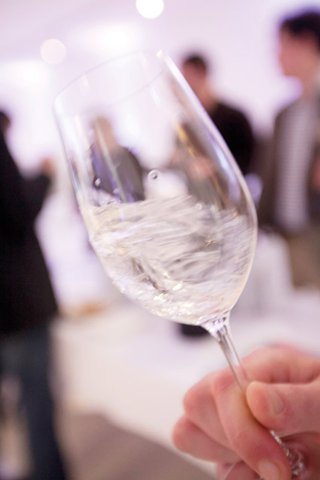Germany & Austria
Not much from Austria, as per usual, but plenty to get excited about from Germany, including regional classics such as Scheurebe and, er, Sauvignon Blanc and Cabernet Sauvignon
If you know an Austrian wine producer, could you poke them with a large stick? It is the only one of all the significant wine-producing countries that has never really engaged with this competition. Why? Who knows. After all, it’s not like sommeliers don’t like this stuff. Maybe the length of the winery names means it takes them too long to fill in the entry forms.
Anyway, a Silver and three Bronzes was a disappointing – yet typical – haul and our sommelier tasters were left sighing and wondering where all the wines were. Mehr Wein nächste Jahr, bitte.
 The Germans, meanwhile, put in a characteristically robust performance. The growth of Riesling in this year’s competition has been a consistent theme, whether it’s from Alsace, the New World or this neck of the woods, and the leap in entries corresponded with an increase in medals.
The Germans, meanwhile, put in a characteristically robust performance. The growth of Riesling in this year’s competition has been a consistent theme, whether it’s from Alsace, the New World or this neck of the woods, and the leap in entries corresponded with an increase in medals.
‘There were some very good wines,’ said Pollen Street Social’s Laure Patry of her flight of dry Rieslings, ‘and with the quality spread out from the entry level to the higher end. This was a case of having a lot of wines to choose from, with quite a variety of styles, but with wines that would work fantastically well with an array of foods.’
The off-dry/medium versions were, if anything, even more popular. ‘We are struggling here, because we’d like to put everything through for a medal,’ said Hakkasan’s Christine Parkinson.
The positive reactions, though, came with a loud Practicality Klaxon, with Caroline Catering’s Richard Brooks speaking for many when he warned that sommeliers needed to ‘bear in mind that the trade is much more enthusiastic about Riesling than the customers’.
And even engaged Riesling lovers, it seems, have a price ceiling. ‘It’s difficult at over £20 [trade price] to put on the list because customers really don’t spend up above that,’ admitted Laure Patry of Pollen Street Social.
It was such practical considerations, rather than a lack of inherent quality, that kept the Riesling Gold count at four, and it means that the Silvers are also well worth exploring. Not least because, as team leader Angela Reddin pointed out, ‘when you compare the prices with Burgundy, there are some great value wines here’.
Outside Riesling, the Grüners were reckoned to be decent, but pricey – a factor that narrowly kept the Kremser Sandgrube off the list. But there were some surprises as well. We’ve had good results for Scheurebes (such as the Iphöfer) here before, but I doubt anyone would have expected to see a medal for a Sauvignon Blanc, still less a Gold for a Pinot/Cabernet blend red. Even more bizarrely, the latter was the cheapest wine to get a medal.
‘It had clear varietal character, and at £7.65 was good value for a Pinot Noir,’ said team leader Natasha Hughes of the Binz & Bratt – a wine that doubtless benefited from the clement 2009 weather.
‘The best Grüners had more freshness and complexity. There was one that made everybody stop in their tracks, which really showed the grape’s potential.’
Richard Masterson, Ubiquitous Chip
‘There are some wonderful Rieslings here, the best revealing a purity and intensity and minerality.’
Laure Patry, Pollen Street Social
‘Listing a variety of these Rieslings makes sense because they can be sold on enthusiasm and by explaining just how well they work with food. Once the customers tries them they will come back for more.’
James Hocking, The Vineyard Group